Find more information in the General Comments section of the assessment
Find more information in the Rating Validity tab of the assessment
- See More
- See More
- See More
- See More
- Good
- Adequate
- Marginal
- Weak
- Poor
 Passenger
Passenger
 Driver
Driver
 Front Seat
Front Seat
 Car
Car
 Pole
Pole
- Good
- Adequate
- Marginal
- Weak
- Poor


Passenger
outboard
center
Fitted to the vehicle as standard
Not fitted to the test vehicle but available as option
Not Available
Forward movement of the 3 year dummy, sat in a forward-facing restraint, was not excessive. In the side impact, both child dummies were properly contained within the protective shells of their restraints, minimising the risk of dangerous head contact. The front passenger airbag can be disabled only by child restraints equipped with Mercedes Benz's automtic sensor system, known as CPOD. As there is no way of disabling the airbag for other rearward-facing restraints, the system was not rewarded by Euro NCAP. Permanently attached labels provided clear warnings of the dangers of using that seating position without first disabling the airbag.
- Good
- Adequate
- Marginal
- Weak
- Poor

Head Impact 17.4 Pts
Pelvis Impact 0.0 Pts
Leg Impact 4.0 Pts
The M Class has an 'active' bonnet. Sensors in the bumper detect when a pedestrian has been struck and actuators lift the rear of the bonnet to provide greater clearance to hard structures underneath. Mercedes demonstrated that the system would deploy correctly for a wide range of pedestrian statures, and over a broad speed range. In all areas likely to be struck by the head of an adult, the bonnet provided good protection. In the areas likely to be struck by a child's head, protection was mixed, with areas of good, marginal and poor performance. The protection offered by the front edge of the bonnet to pedestrians was poor.
- Good
- Adequate
- Marginal
- Weak
- Poor
| Performance | ||
| Vehicle Yaw Rate @ COS + 1.00 s | 1.56% | meets ECE requirements |
| Vehicle Yaw Rate @ COS + 1.75 s | 1.65% | meets ECE requirements |
| Lateral Displacement @ BOS + 1.07 s | 2.9 m | meets ECE requirements |
| Applies To | All seats | ||
| Warning | Driver Seat | Front Passenger(s) | Rear Passenger(s) |
| Visual | |||
| Audible | |||
|
|||
The M Class has electronic stability control as standard, as well a seatbelt reminder system for the driver, passenger and rear seats. A driver-set speed limitation device is standard equipment but did not meet Euro NCAP's requirements.
- Specifications
- Safety Equipment
- Videos
- Advanced Rewards
- Rating Validity
Specifications
Tested Model Mercedes-Benz ML 350 BlueTEC 4MATIC, LHD
Body Type - 5 door SUV
Year Of Publication 2012
Kerb Weight 2100kg
VIN From Which Rating Applies - all M-Class of the specification tested
Class Large SUV
Safety Equipment
Note: Other equipment may be available on the vehicle but was not considered in the test year.
Fitted to the vehicle as standard
Fitted to the vehicle as option
Not fitted to the test vehicle but available as option
Not Available
Not Applicable
Videos
Advanced Rewards
Rating Validity







Find more information in the General Comments section of the assessment
The rating of the Mercedes-Benz M-Class has been upgraded from 2011 to 2012. The car is unchanged and test results have been carried over from the previous year. The 2012 rating reflects the performance of the M-Class against Euro NCAP's latest requirements.
 Share
Share
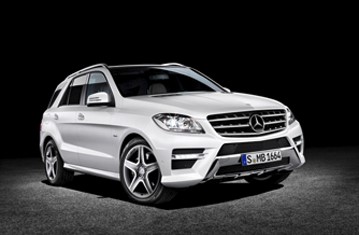
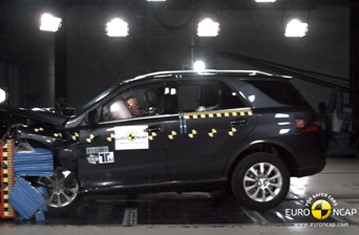

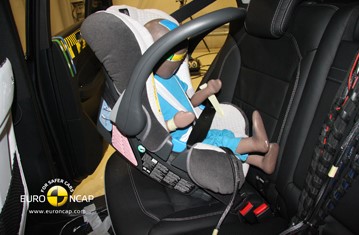

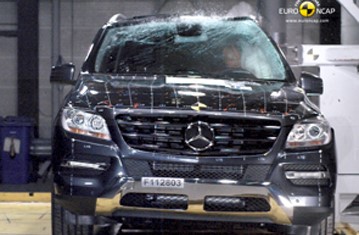
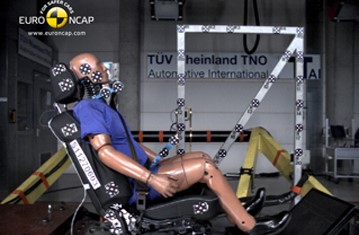
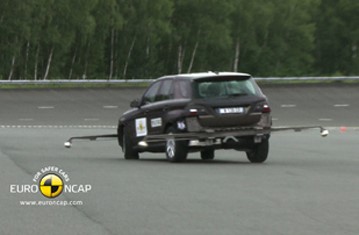




The passenger compartment remained stable in the frontal impact. Dummy readings indicated good protection for the knees and femurs of both driver and front passenger. Mercedes Benz showed that a similar level of protection would be provided to occupants of different sizes and those sat in different positions. The M Class scored maximum points in the side barrier test. In the more severe side pole impact, protection of the chest was adequate and that of all other body areas was good. The front seats and head restraints provided good protection against whiplash injuries in the event of a rear impact.